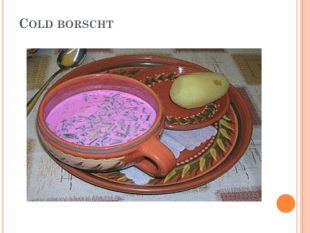National Ukrainian Cuisine
Про матеріал
Поданий матеріал допоможе якісно провести урок в 7 класі, вдосконалювати лексичні навички й навички читання,аудіювання й говоріння; розвивати логічне мислення; виховувати зацікавленість у розширенні своїх знань щодо кулінарних традицій своєї країни.
Перегляд файлу
Зміст слайдів


Безкоштовний сертифікат
про публікацію авторської розробки
про публікацію авторської розробки
Щоб отримати, додайте розробку
Додати розробку






























